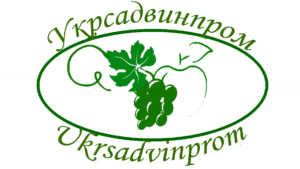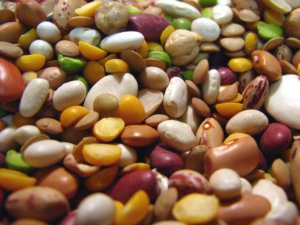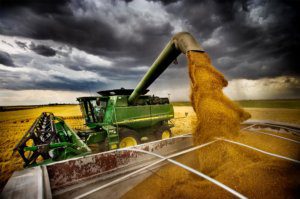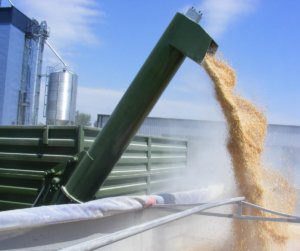
Ukraine’s Verkhovna Rada has passed an amendment to the Tax Code, according to which the excise duty on fruit and berry wines is reduced to UAH 0.01 per liter, Head of the Ukrsadvynprom association Volodymyr Pechko has said. “The Verkhovna Rada reduced the excise duty on fruit and berry wines and equated it to the excise duty on grape wines. Previously, it was equated with liquor and vodka products. This industry was dilapidated when there was ‘draconian’ legislation. And now the conditions are optimal to resume production of fruit and berry wines,” he told Interfax-Ukraine. According to a comparative table, the tax rate on non-sparkling wines with 1.2-15% ABV will be UAH 0.01 per liter.
According to the head of Ukrsadvynprom, the parliament also agreed on changes, according to which, new producers of wine products will be considered the fourth group of taxpayers using the simplified taxation system.
As reported, the Cabinet of Ministers has increased government support for hop growing, laying of young gardens, vineyards and berries, from UAH 300 million in 2018 to UAH 400 million in 2019.
According to Pechko, this increase in state support is advisable, since in 2018 the industry will use all the allocated funds. “At the summer meeting the budget allocation committee of the Ministry of Agrarian Policy and Food allocated compensation only for planting material, and at a meeting in autumn refrigerators, shock freezing and sorting lines (except seedlings) will also be reimbursed for. Virtually all funds for gardening will be used,” he explained.
At the same time, the head of Ukrsadvynprom noted that to develop the industry, it is necessary to spend more funds on product processing. “We need to finance not only planting, but also processing, sorting and storing fruits and berries. In particular, funds should be allocated for processing – refrigerators, blast chilling chambers for berries, processing into new products – apple chips, dried goods, grape and fruit wine,” Pechko said.
He added that an increase in processing volumes in future will help fruit and berry producers in the years with large harvests. “This year the price of products of further processing – raspberries, currants, apples – has fallen. Purchase prices for apples, for example, at the plants were UAH 0.52/kg, raspberries some UAH 10-12/kg. This is a very low price, considering harvesting costs. The reduction in excise tax on fruit and berry wine will enable enterprises to process their products themselves,” the expert said.
As reported, the Verkhovna Rada redirected UAH 1 billion from the programs of state support for the agro-industrial complex to the Regional Development Fund. The total amount of state support for agriculture will be about UAH 6 billion. According to information on the website of the Ministry of Agrarian Policy and Food, as of November 16 some 35.8% of state support for the agro-industrial complex had been used. Out of UAH 300 million provided for hop growing and gardening, some UAH 101 million has been used.

The Better Regulation Delivery Office (BRDO) estimates the volume of the illegal taxi market in Ukraine at 93-98% with the market volume being UAH 40 billion a year, head of the Infrastructure sector at BRDO Vladyslav Prytomanov has said during the round table “The taxi services market” in Kyiv. “According to experts, the total volume of the taxi market in Ukraine is UAH 40 billion a year, which are distributed between carriers (UAH 36 billion) and information and dispatch services (UAH 4 billion). At the same time, the level of market shadowing ranges from 93% to 98%, about 95% on average,” he said.
According to BRDO, there are about 220,000 taxi drivers in Ukraine, serving 280 million passengers annually. The average cost of a taxi ride in Ukraine is relatively low compared to other countries and amounts to UAH 60-90 for a trip within the city.
The expert noted that the budget revenues from the taxi market work are 1-3% of the minimum projected.
Speaker of the Association of Responsible Carriers public organization Oleksandr Diachenko, in turn, said that according to a study conducted by GfK, 42.7% of drivers are willing to work with an illegal taxi service if they need to pay 15-20% of taxes for legal work.

Areas planted with leguminous crops in 2018 were expanded by 12.4% compared with the previous year, to 568,400 ha, while their harvest fell by 15.9%, to 1.04 million, according to the UkrAgroConsult analytical agency. “Despite the decline in prices and profitability, the area planted with legumes actually increased this year. At the same time, there was a decrease in yield, but the weather factor worked here. One can argue how negative the weather factor is, which affected the decrease in yield, decrease in supply, but it is quite possible it contributed to the prices. The conclusion we are making is that farmers continue to trust legumes,” Director General of the UkrAgroConsult analytical agency Serhiy Feofilov said at a conference in Kyiv.
He said that the export of legumes will be high this season.
“This year, the export of peas will fall quite strongly. Earlier, in the structure of exports from Ukraine, chickpeas dominated, now horse beans and beans, and lentils have recently sold well. According to the nuances of logistics, if two or four years ago up to 90% legumes were exported from Ukraine by containers, but now the situation has changed and up to 60% is exported in bulk and mainly this is export of peas,” Feofilov said.
According to him, in the outlook of three to five years, the drivers of the development of the legume market of the Black Sea region will be: stable growth in demand, the need to restore crop rotation after oversaturation with oilseed crops, attractiveness both for large farms (peas, large batches) and for small farms (other legumes), differentiation of the commodity nomenclature for farms, new trends in healthy nutrition from the use of legumes.
According to Ukraine’s Agricultural Policy and Food Ministry, global demand for legumes is growing faster than supply. Today, the largest producers of legumes in the world are India, China and Canada.
“Ukraine has all the prerequisites to become one of the key producers of these products and a supplier of legumes to the global market,” Deputy Minister of Agrarian Policy and Food on European Integration Olha Trofimtseva said.
According to her, Ukrainian exports of legumes are growing significantly. The main buyers of Ukrainian products are India, Turkey, Pakistan, Myanmar and the Netherlands.
“In 2015, we exported legumes to the amount of $60.6 million, in 2017 – $148.5 million, and for the results of January-October, this figure is $97.7 million,” the deputy minister said.

Ukraine as of November 26, 2018 fully used 10 quotas for duty free exports of food under a Free Trade Area (FTA) agreement with the European Union (EU), particular, quotas for honey, cereals, malt and wheat gluten, preserved tomatoes, grape and apple juices, wheat and corn, butter and poultry.
According to a posting on the website of the Ukrainian Agribusiness Club (UCAB), Ukraine also almost fully used quotas for starch (95%) and garlic (96%).
The UCAB reminded that from October 1, 2018 the second year of additional quotas for five groups of goods began, and two groups have been already closed (honey and preserved tomatoes).
“Before the end of the year, additional quotas for grain will be in effect, of which the volume for wheat and corn has already been used, and only 23% is used for barley,” the UCAB said.
As reported, in January-October 2018, exports of agricultural products from Ukraine amounted to $14.8 billion, which is $165 million more than a year earlier.
In addition to quotas for Ukraine, quotas on duty free import of goods from EU countries to Ukraine are still in effect. These include quotas for the following groups of goods – sugar, poultry meat (primary and secondary quotas) and pork (primary and secondary quotas).

Ukraine as of November 29 threshed 67.6 million tonnes of grain and leguminous crops from 14.5 million hectares (98% of the target) with the yield of 4.72 tonnes per hectare, the press service of Ukraine’s Agricultural Policy and Food Ministry has reported.
Some 34.3 million tonnes of early grain and leguminous crops was harvested from 9.9 million hectares with a yield of 3.48 tonnes per hectare, while 33.3 million tonnes of maize was gathered from 4.3 million hectares (95%) with a yield of 7.69 tonnes per hectare, Ukraine’s Ministry of Agrarian Policy and Food said.
The yield of buckwheat was 136,000 tonnes harvested from 108,000 hectares (99%), or 1.26 tonnes per hectare; that of millet was 78,000 tonnes from 51,000 hectares (98%), or 1.54 tonnes per hectare.
What is more, Ukrainian farmers threshed 13.8 million tonnes of sunflower seeds from 6 million hectares (99.8%) with a yield of 2.28 tonnes per hectare; 4.3 million tonnes of soybeans from 1.7 million hectares (99%) with a yield of 2.58 tonnes per hectare; 2.7 million tonnes of rapeseeds from 1 million hectares with a yield of 2.61 tonnes per hectare.
The yield of sugar beets was 13.5 million tonnes from 273,000 hectares (98% of the plan), or 49.4 tonnes per hectare.
Ukrainian farmers have sowed 7.1 million hectares with winter grain crops (the plan is 7.2 million hectares) and 1 million hectares with winter rapeseeds (116% of the plan).
The ministry expects Ukraine’s grain yield in 2018 will grow by 2 million tonnes compared to 2017, to 64 million tonnes.

Construction of new grain and oilseeds transshipment facilities at the Mykolaiv seaport will start in the rear of berth eight. Private investment will total over UAH 1.2 billion, the Ukrainian Sea Port Authority has reported. “We are investing our own funds and are actively cooperating with port operators and private businesses. This is the development of the berth and rear infrastructure of berths zero and eight. This will increase the capacity of the Mykolaiv port for processing grain by more than 2 million tonnes per year, oil – by 750,000 tonnes per year,” Head of the Ukrainian Sea Port Authority Raivis Veckagans said during a working visit to the Mykolaiv seaport.
The Ukrainian Sea Port Authority refused to name investors, adding that this would be a new cooperation for the port. The Ukrainian Sea Port Authority plans to allocate UAH 350 million within the framework of fulfilling the company’s obligations under a public private partnership project for the construction and dredging of berth eight. At the same time, private investment in infrastructure will amount to over UAH 1.2 billion.
According to the Ukrainian Sea Port Authority, the planned grain complex will have a storage capacity of 96,000 tonnes, a warehouse – 40,000 tonnes, as well as other support facilities. Earlier, the Infrastructure Ministry reported that COFCO (China National Cereals, Oils and Foodstuffs Corporation) is ready to invest up to $30 million in the berth capacity of the Mykolaiv port and river logistics.
Seaside Terminal intends to invest about UAH 120 million in the reconstruction of the Mykolaiv-Vantazhny railway station in order to increase its capacity.
FACILITIES, GRAIN, INVESTMENT, MYKOLAIV, OILSEEDS, SEAPORT, TRANSSHIPMENT